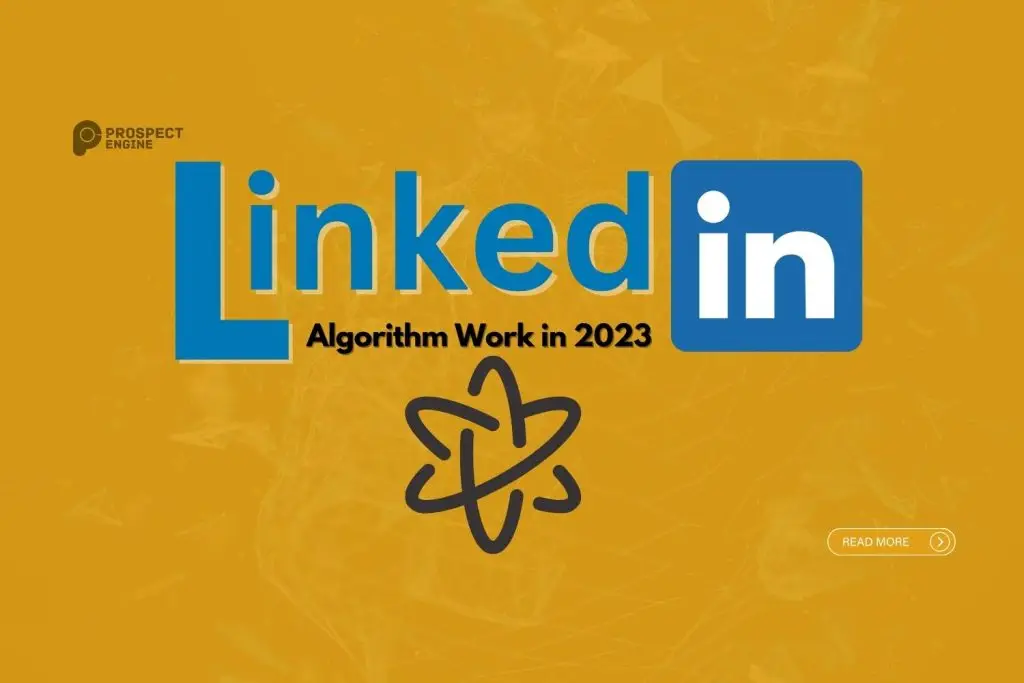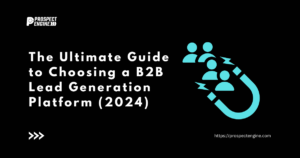If you’re looking to maximize your impact on LinkedIn, understanding the ins and outs of LinkedIn’s algorithm is essential. Whether you’re a business trying to reach a wider audience, a job seeker seeking to improve your personal brand, or a content creator hoping to boost your visibility, the algorithm plays a crucial role in determining who sees your posts and how many people engage with them.
One of the most important factors in the LinkedIn algorithm is relevance. The platform aims to show users content that is relevant to their interests and needs based on factors such as their job title, industry, and location. This means that if you want to reach a specific audience, you need to create content that speaks directly to their interests and concerns.
Another key factor in the LinkedIn algorithm is engagement. The more people who engage with your posts – by liking, commenting, or sharing – the more likely the algorithm is to show your content to a wider audience. This means that you need to create relevant, compelling, and engaging content to encourage people to interact with it.
In addition to relevance and engagement, the LinkedIn algorithm also takes into account recency and quality. Posting regularly and consistently can help keep your content in front of your followers while creating high-quality content that is well-written, informative, and visually appealing can help you stand out from the crowd and attract more engagement.
By focusing on these key factors and staying up-to-date with the latest changes to the LinkedIn algorithm, you can increase your visibility and expand your reach on the platform. So start experimenting with different types of content, track your performance metrics, and refine your approach until you find a winning formula that works for you.
What Is the LinkedIn Algorithm?
Algorithms are a crucial component of LinkedIn’s operations, likely employing a multitude of sophisticated algorithms, some of which work in harmony to create more advanced algorithms. But, before delving into the intricacies of algorithms, it’s crucial to grasp the fundamental concept of what an algorithm is and what it accomplishes.
An algorithm can be succinctly defined as a sequence of computational steps that produce a desired outcome, almost like a mathematical formula used to solve a problem. These formulas are at the heart of many digital world functions.
When the term “LinkedIn algorithm” is mentioned, people generally refer to the platform’s feed algorithm, the process that delivers content to users. Despite its central role in the platform, the inner workings of the feed algorithm are shrouded in secrecy, known only to a select few, who are bound by nondisclosure agreements.
Algorithms are often referred to as “black boxes,” as the inputs and outputs are visible, but the processes inside remain a mystery. Despite this, understanding the LinkedIn algorithm can be incredibly valuable for companies relying on the platform to generate revenue and find clients.
Benefits of Understanding LinkedIn’s Algorithm
The art of marketing and sales revolves around the deep comprehension of your target audience and customers. But, to truly excel in these fields, one must also grasp the essence of effective communication. In today’s digital age, many sales journeys commence on the professional networking platform LinkedIn. The more connections you can make and the more introductions you can initiate, the greater the chances of discovering and captivating new clients.
By leveraging the power of LinkedIn, you can:
- Elevate your professional presence
- Attract more attention to your posts and profile
- Expand your network and connections
- Uncover fresh leads and opportunities for business growth.
In essence, understanding the intricacies of LinkedIn can help you tap into a vast pool of potential customers and enhance your overall sales and marketing strategies.
How Does the Linkedin Algorithm Work?
The enigmatic algorithms of LinkedIn have, for long, been shrouded in mystery. Yet, through close examination of inputs and outputs, certain inferences can be drawn. The digital marketing sphere, through the passage of time, has managed to unearth three categorizations by which LinkedIn categorizes posts made by its members :
In the world of LinkedIn, there’s nothing more desirable than having your content labeled as high quality, with engaging and viral attributes that stick in the minds of viewers. To grasp the elusive essence of this accolade, it’s crucial to comprehend the three-step process through which LinkedIn sorts its content.
Step 1: LinkedIn takes the reins by distributing a new post to a select few among your connections and followers, gauging their reactions and perceptions.
Step 2: If the post is deemed spam, it’s usually the final stop for the content. On the other hand, if it evades the spam label but fails to garner significant engagement, it will be relegated to the category of low-quality content. Despite some additional visibility, it will join the ranks of other ill-fated LinkedIn posts if it doesn’t pick up steam.
Step 3: However, if the post is met with a high level of engagement within your network, LinkedIn will take notice and further spread it to a wider audience among your connections. And if it continues to spark engagement, it will continue to be disseminated, eventually reaching even more followers. The crown jewel of high-quality posts is their ability to transcend the boundaries of your network and be shared with LinkedIn users who might find joy in your content.
What’s the Best Time to Post on LinkedIn?
The optimal time for posting on LinkedIn is a contentious topic that elicits varied opinions. Some swear by the early hours of the morning, others tout the efficacy of midweek Wednesdays, while still others swear by the lunch hour or the end of a workday as the best times to engage their audience. However, the true determining factor in catching your audience’s attention is understanding their browsing habits and being present when they are actively perusing their feed.
It’s important to note that while these time frames may be less crucial in determining your post’s performance, the LinkedIn algorithm still considers the timeliness of content when ranking posts. The platform’s feed is designed to be dynamic and relevant, so stale or slow-moving content may not receive the same priority as timely, engaging material.
Therefore, when crafting content for LinkedIn, it’s essential to keep your audience in mind. Consider their interests, schedule, and what might pique their curiosity, causing them to pause their scroll. The objective is to create and share content that effectively captures their attention and leaves a lasting impression.
Growing Your LinkedIn Engagement Rate
The manner in which your followers interact with your post can greatly influence its perceived value to the LinkedIn community. Engagement, in all its various forms, is a barometer of how intriguing or relevant your content may be to others on the platform.
From the expression of emotions through reactions like “like,” “celebrate,” “support,” “funny,” “love,” “insightful,” and “curious,” to the exchange of ideas through comments to the sharing of your post with a wider audience, engagement on LinkedIn can take on many shapes and sizes.
Although the exact way in which LinkedIn’s algorithm evaluates these forms of engagement remains somewhat of a mystery, it is evident that a higher level of engagement leads to greater visibility for your content.
Follow Alexa on LinkedIn.
How Do You Increase Your LinkedIn Post Engagement Rate?
Growing your LinkedIn engagement can seem like a daunting task, but it all boils down to two key strategies: posting and commenting. By consistently creating posts and engaging in discussions with others on the platform, you can elevate your overall level of engagement.
Think of it like attending a business conference. When you initiate a conversation with someone, you don’t just make a quick remark and then walk away. You engage in dialogue, ask questions, and offer valuable resources. The same principles apply to LinkedIn.
By taking the time to comment on others’ posts and reply to comments on your own, you can build relationships, establish your expertise, and ultimately drive greater engagement on the platform. So, don’t be afraid to dive into the conversation and actively participate in the LinkedIn community.
Follow Nick on LinkedIn.
The art of crafting a successful presence on your professional network calls for a multitude of elements to come together in a harmonious symphony. One crucial aspect that should not be overlooked is the consideration of time. The timeliness of your reactions can greatly impact the perception of relevance surrounding your posts.
The intricate details like this, where the minutia of context takes center stage, truly set apart the most astute networkers from the rest. The algorithms that govern the platform, such as LinkedIn’s, are programmed to take these nuances into account and make sense of the data at hand.
Therefore, it is of utmost importance that when you engage with your network, you keep a sharp eye on the clock, always striving to maintain a prompt and timely response. This level of diligence will boost the topicality of your posts and leave a lasting impression on those in your network.
How to Leverage LinkedIn’s Algorithm — 8 Best Practices & Tips
Conquering the algorithm of 2023 on LinkedIn is a challenge that many professionals are grappling with. Despite the elusive nature of the solution, it’s widely accepted that certain techniques can enhance the impact of your content and drive higher engagement. But what exactly are these practices that can give you the upper hand in the algorithms’ ever-changing game? Let’s delve deeper and explore the secrets to unlocking greater visibility and success on the platform.
- Avoid indiscriminate spamming – this is the quickest way to lose followers and damage your online reputation.
- Offer valuable content that is relevant, informative, engaging, and thought-provoking. The goal is to provide something of substance to your followers rather than just filling their feeds with meaningless posts.
- Encourage engagement through your posts by asking for people’s opinions, feedback, or alternative viewpoints. This helps to create a sense of community and keeps the conversation going.
- Respond to comments on your posts and keep the discussion flowing. This shows that you are present, active, and care about your followers’ experiences.
- Stay attuned to when your followers are most engaged with your content, and schedule your posts accordingly. Tools are available that make this easier, such as scheduling apps.
- Maintain a consistent posting schedule, so your followers know when to expect new content from you.
- Utilize keywords and hashtags mindfully, taking into account your desired audience’s search terms and ensuring that your content is accurately described.
- Promote your posts on your website and other social media accounts when relevant. However, be mindful of each platform’s specific algorithms and audiences; you don’t want to diminish your presence elsewhere. The key phrase here is “if relevant.”
It’s essential to remember that while creating a to-do list is crucial, there’s another list that could arguably hold even more significance – the don’ts. In the world of social media and online communication, it’s imperative to avoid certain pitfalls, lest you be labeled a spammer or offend someone inadvertently. So, without further ado, let’s delve into the two key things to avoid:
Avoid bombarding your audience with irrelevant or excessive messages – this point is so crucial it’s worth reiterating.
Refrain from tagging individuals you’re unfamiliar with in your posts. Not only is it impolite, but it also opens the door for potential backlash.
Treading the fine line between being useful and overwhelming, the judicious use of external links is a subject that demands careful consideration. While it may not be explicitly included on either a “do” or “don’t” list, the impact of these links on promoting your content is a subject of ongoing debate.
At times, an external link may serve as the focal point of your post, providing valuable information or resources to your audience. Conversely, excessive use of these links can potentially harm your promotion efforts. To stay ahead of the game, it’s crucial to pay attention to patterns and try to decipher the algorithm’s intricacies governing your content’s promotion.
By taking the time to assess the effect of external links, you can ensure that your content remains both informative and effective, striking a harmonious balance between the two.
As the digital landscape continues to evolve, it’s imperative to remain vigilant in your approach to content creation. One crucial aspect of this is tracking your results and continuously testing new strategies. After all, shifts in trends, audience preferences, and even the algorithms of platforms like LinkedIn demand a constant state of adaptation. So, even if you’ve achieved high success, don’t let complacency set in. Staying ahead of the curve requires a proactive and flexible approach.
LinkedIn Algorithm for Business
Globally, companies across a multitude of sectors have come to grasp the significance of LinkedIn as a powerful marketing strategy. A key tactic is to capitalize on LinkedIn Ads to identify and attract prospective leads and clients.
However, social selling is another approach that involves engaging with LinkedIn users through posts and comments. It is crucial to strike a balance between being persuasive and maintaining a professional demeanor while hunting for new leads on the network.
Your professional image and the trust you’ve built within your network are integral aspects of your LinkedIn persona, and once damaged, they can be incredibly challenging to repair. Thus, it is vital to approach your LinkedIn presence with a measured and strategic approach.
Takeaways
The LinkedIn algorithm holds a crucial role in determining the visibility of posts and the timing of their display on the platform. A deep comprehension of the algorithm’s workings can increase LinkedIn engagement rates.
For novice users of LinkedIn, the journey can begin by participating in discussions on other users’ posts, adding your own thoughts and opinions to the mix. You can also share relevant content from other users with your network to keep your followers informed.
As you advance, it’s time to publish your original content and actively engage with those commenting on your posts. Keeping a close eye on your metrics will help you understand the type of content that resonates with your audience, the most appropriate time to post, and the frequency at which to publish.
While many LinkedIn users may search for a foolproof formula to “hack” the algorithm, the key to success is creating authentic content and genuinely engaging with your audience. This approach promises a more sustainable and natural growth of your LinkedIn presence rather than relying on artificial methods.





